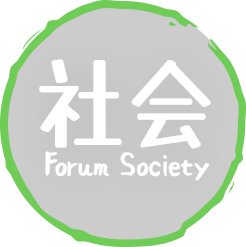[headerLesson]Modifiers and Levels of Politeness[/headerLesson] In
the previous lesson we had gone over some of the differences
between い-adjectives and な-adjectives as well as other important
grammar topics. If you are arriving to this lesson without first
studying the previous, do not continue, and return to Introduction
to Japanese Adjectives before proceeding.
[u]Here are a few review questions:[/u]
[tab][/tab]Question (1) : What do you do to an い-adjective when you
use it as a predicate?
[tab][/tab][b]ANSWER:[/b]
__________________________________________________________
[tab][/tab]Question (2): What do you do to a な-adjective when you
use it as a predicate?
[tab][/tab]ANSWER:
__________________________________________________________
[tab][/tab]Question (3): Do い-adjectives almost always end with [ i
]? (YES/NO)
[tab][/tab][b]ANSWER:[/b] _____________
[tab][/tab]Question (4): な-adjectives don’t have a specified ending
like い-adjectives. (TRUE/FALSE)
[tab][/tab][b]ANSWER:[/b] _____________
[i]If you are not certain about your answers, review Part I of
Adjectives to get a firm grasp of the basics.[/i]
[headerLesson]Modifying Nouns[/headerLesson] We shouldn’t proceed
any further before first understanding how to modify a noun. To
understand how this works, we will use examples and elaborate on
them.
Let’s modify a noun, replace [hl]X[/hl] with any appropriate noun
you wish to use.
これは[hl]X[/hl]です。
[b]Jappleng Example:[/b] これは[hl]ほん[/hl]です。 [i](This is a
book)[/i]
[i]We know that this means “This is a X.”[/i]
これはわたしの[hl]X[/hl]です。
[b]Jappleng Example:[/b] これはわたしの[hl]ほん[/hl]です。 [i](This is my
book)[/i]
[i]We know that this means “This is my X.” What we did here is that
we modified the noun and gave it a new meaning. It’s no longer just
an X, it is now my X. This is what it means to modify a noun. Let’s
explore this concept further with the next example.[/i]
これはわたしの[hl]「Y」「X」[/hl]です。
[b]Jappleng Example:[/b] これはわたしの[hl]あかいほん[/hl]です。 [i](This is my
red book)[/i]
Hopefully, you can now see the reasoning behind modifying a noun;
it can make a big difference in a sentence.
[b]Now it’s your turn![/b]
[u]Create your own sentences using the three examples given above
without using ほん and あかい.[/u]
[tab][/tab]1.
_________________________________________________________
[tab][/tab]2.
_________________________________________________________
[tab][/tab]3.
_________________________________________________________
[tab][/tab]4.
_________________________________________________________

[headerLesson]Adjectives Before Nouns[/headerLesson] We have
already studied both い and な adjectives when they come after a noun
and also gave examples. We know that when we are using an
い-adjective, we will remove the last い and append です to turn the
adjective into a predicate.
We also understand that when we use a な adjective, we remove な when
we want to use it as a predicate. Incidentally, な adjectives aren’t
true adjectives by definition, can you think of why? Think about
this as we proceed further.
What happens when we use an い-adjective before the noun so that it
is treated as a true adjective? When this happens, we keep the
adjective in its い-form. かわいい is not かわい as we will retain the
extra い from its い-form so long as it is not used as a
predicate.
[tab][/tab]This tea is hot = このおちゃはあついです。
[tab][/tab]That tea is hot = そのおちゃはあついです。
[noticebox]Kindly note that in today’s homework assignment we will
be learning about ちゃ as well as others. For now, please read it as
“cha”.[/noticebox]
How would you describe that the tea is very hot? Simple, we can
easily slide the adverb (very) before the adjective or in this
instance, the predicate.
This tea is very hot = このおちゃはとてもあついです。
What if you wanted to describe that the tea is more specifically
green tea and that it is very hot?
Simply add みどりい in front of おちゃ to make このみどりおちゃはとてもあついです。
Or more correctly when you learn the Kanji: この緑お茶は熱とてもいです。
Can you say “I like this red book”?
[tab][/tab]YOUR ANSWER)
___________________________________________

[headerLesson]Degrees of Politeness[/headerLesson] It’s a given
that Japan is very polite with its actions and language but
sometimes there’s such a thing as being too polite or that saying
something one way may be perceived in another way. Let’s discuss
politeness so that you can carefully form sentences without
worry.
[b]あなた is rude[/b]
It is generally rude (unnatural) to say あなた in conjunction with an
adjective. For instance, we’ve used かわいい a number of times before,
but what if we said あなたはかわいいです。 If we are converting this into
English “You are cute” it seems polite but it’s not how it is in
the Japanese culture. This is textbook form and does not translate
into the real world under most (likely all) circumstances
especially in business.
[tab][/tab]あなたはかわいいです。⇒ 「noun / name 」はかわいいです。⇒ [b]ie:[/b]
さくらちゃんはかわいいです。
Consider reducing the amount of times you use あなた and わたし.
Textbooks may often teach it this way but it doesn’t fit well in
every day Japanese. Perhaps you may have heard Japanese people
speak to each other while referencing each other’s name or title
before, this is the very reason why. In English, it may sound
strange but in Japanese it’s perfectly normal.
です should be avoided if possible
If both the speaker and listener understand what the topic is and
there’s only a need to state an adjective such as かわいい, then we can
omit 「noun」は from 「noun」はかわいいです to generate かわいです。 It’s even
possible to remove です however it will be even less formal but it’s
entirely appropriate to say. Let’s take a look…
[u]Examples[/u]
あなたはかわいです。 ⇒ Not Appropriate
「noun」はかわいです。⇒ Appropriate (Formal)
かわいです。 ⇒ Appropriate (Less formal)
かわい ⇒ Appropriate (Informal)
[b]です has other forms[/b]
We already know how to use です in different tenses but it is
possible to use different degrees of formality instead of
constantly using です where applicable.
[b]「だ」[/b]
だ means the same thing as です in the plain form, but is more casual.
It can be used in different tense in place of です.
[tab][/tab][b]Example 1:[/b] わたしは「____」だ。[i](I am blank)[/i]
[tab][/tab][b]Example 2:[/b] わたしはしわせだ。 [i](I am Happy)[/i]
[b]More appropriately:[/b] 私は幸せだ。[i](Kanji)[/i]
As a reminder, kanji is best used to describe what you are trying
to say. Using only kana can at times pose confusion. We will be
exploring new Kanji very soon. There are other alternatives to use
as we will see later, however です and だ are our focus for the time
being. We will later learn feminine speak for those wanting to
sound cuter and gentle, and delinquent speak for those interested
in Yakuza films. Please look forward to this.
[headerLesson]Homework Assignment[/headerLesson] We have learned a
lot in these past two lessons and can see the fruits of our labor.
Sentences now can be generated in many different forms and in
different lengths. We will practice some more with today’s homework
assignment which will lead to the final lesson about Japanese
adjectives.






























